
The audiobook of Harry Potter: A History of Magic is a journey through history and all over the world. From European runes to Ethiopian talismans, crystal balls and broomsticks to giants and werewolves, it brings to life a multitude of artefacts – the very stuff of magic and mythic traditions.
As announced here in August, it is being narrated by Natalie Dormer, best known for her roles in Game of Thrones and The Hunger Games, and most recently in a new television adaptation of Picnic At Hanging Rock.
The audiobook is packed full of contributions from Wizarding World favourites, including Harry Potter audiobook narrators Stephen Fry and Jim Dale, artists Jim Kay and Olivia Lomenech Gill, as well as the curators at the British Library and New-York Historical Society.
It is also structured according to the subjects taught at Hogwarts, but you won’t need a Time-Turner to attend all of these classes!
Here are some highlights you’ll hear on the journey.
Jim Dale on Centaurs
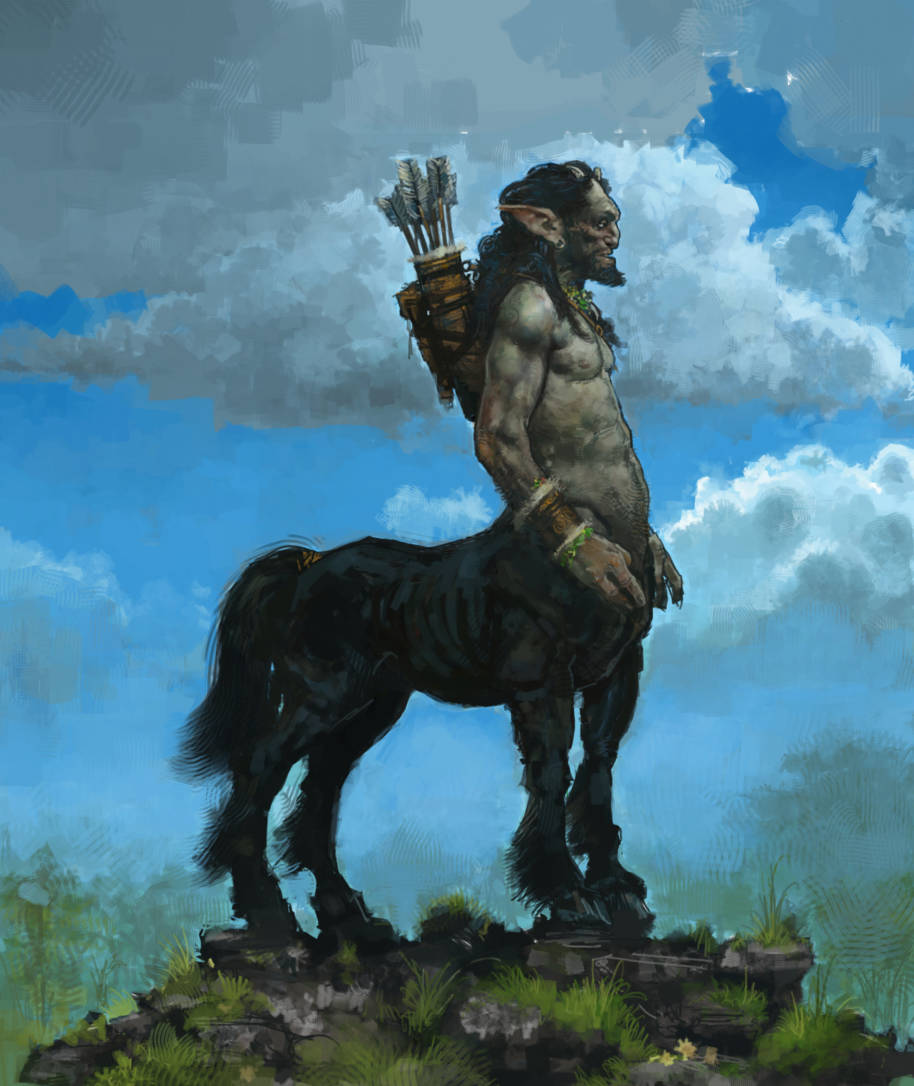
When Jim Dale was recording the US version of the Harry Potter audiobooks and suddenly came upon three centaurs entering the story, he had to think on the hoof. He decided to give them Welsh accents – old, middle-aged and young.
After it was released, Jim received a letter querying why on earth he had given centaurs Welsh accents. Perplexed, Jim explains how he had to write back justifying the accents he gave to centaurs which are in fact, fictional beings: ‘I wrote a letter to him: “…so there are thousands of centaurs in Wales, every football team has a centaur forward, every town has an old folk’s centaur, you know, or a library centaur.” I never did hear back from him.’
Stephen Fry recites the Abracadabra charm
Not to be outdone, narrator of the UK Harry Potter audiobooks has a go at the abracadabra charm. This famous magical word was originally used in the 2nd century AD by the physician to a Roman emperor. It’s original use was as a cure or prevention against malaria.
The way it works is to write the word ‘abracadabra’ several times, every time on a new line, but to take off a letter each go. This way the pattern resembles an upside-down cone with the last letter making the apex. The parchment was then wound with linen and hung around the neck. Stephen recites the charm in the audiobook and has since purportedly saved himself a small fortune in mosquito spray.
Nicolas Flamel’s tombstone
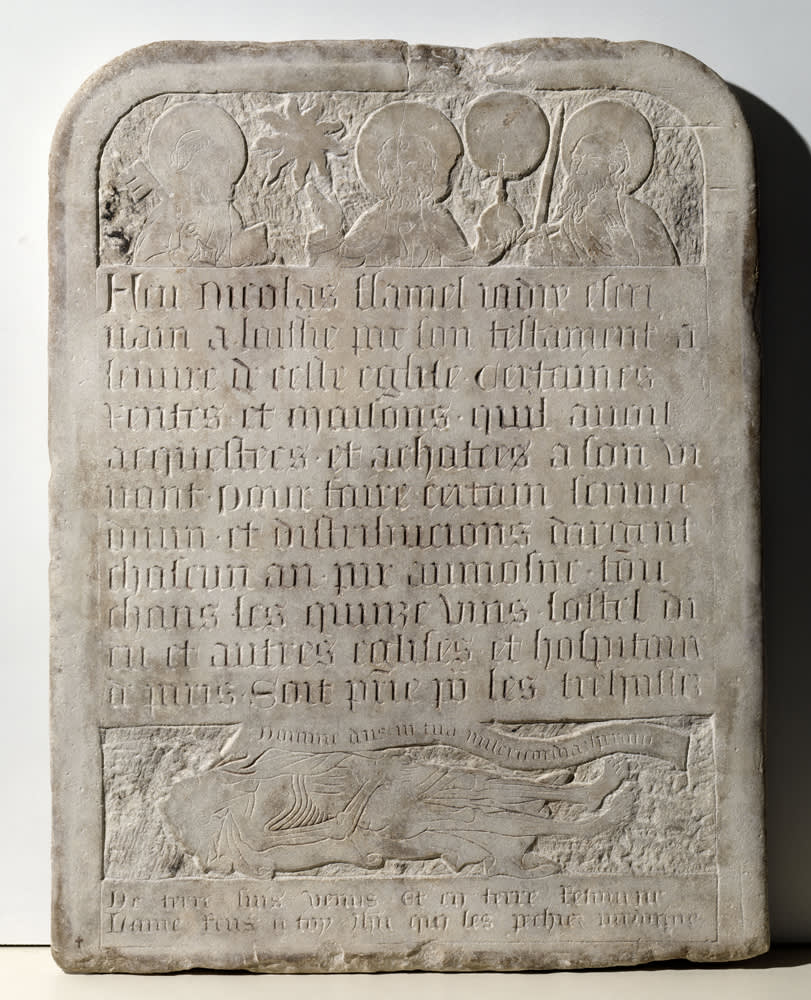
As revealed in its second trailer, Nicolas Flamel is making an appearance in The Crimes of Grindelwald, but did you know that the storied alchemist was a real figure from history? He didn’t quite make it to over six hundred years old though – because there’s a tombstone with his name on it.
Supposedly designed by Flamel himself, the tombstone was discovered in the 19th century where it was being used as a chopping board in a Parisian grocer’s shop! The legend around Flamel suggested that he was a book dealer who came across a mysterious and magical book that contained secrets regarding the philosopher’s stone. Although there is actually no documentary evidence that he was involved in the book trade, he was a wealthy landlord. This didn’t stop him becoming very famous indeed, and mentioned in the journals of Sir Isaac Newton and Victor Hugo’s novel, The Hunchback of Notre-Dame.
Jim Kay on representing Diagon Alley
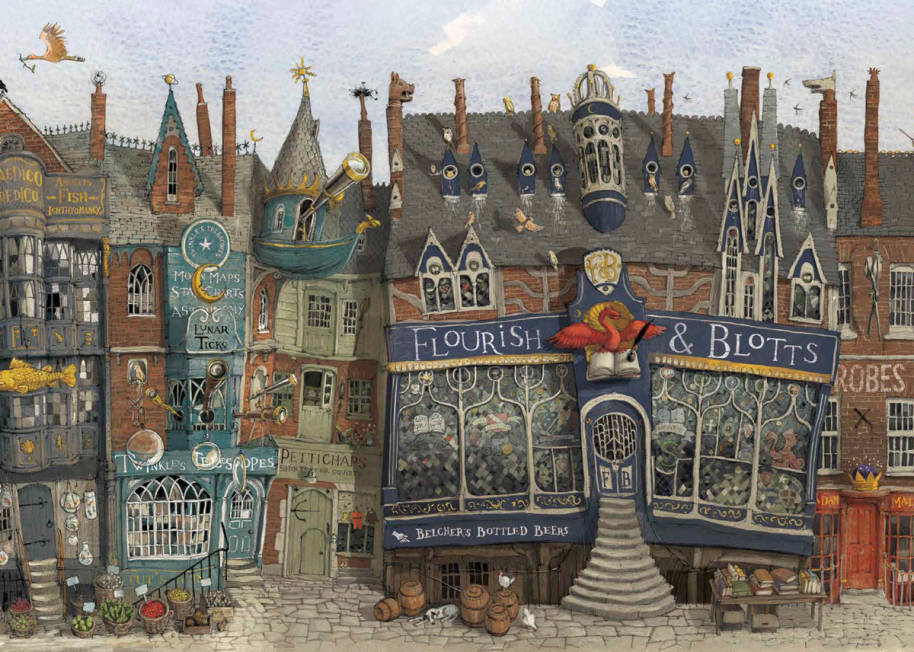
Admitting it ‘nearly killed me’, Jim Kay spends some time talking about the various inspirations behind the meticulous 19-foot-long panorama of Diagon Alley he created for the illustrated edition of Harry Potter and the Philosopher’s Stone. Describing the process as akin to knitting, where you start in one corner and move outwards, it took a huge amount of invention to fill in the gaps between well-known shops such as Quality Quidditch Supplies and Florean Fortescue’s ice cream parlour.
Alongside Bufo’s (named after the toad that lived in Jim’s garden) and Noltie’s Botanical Novelties (named for a botanist friend called Professor Henry Noltie), there is a shop with an ancient Egyptian connection, Tut’s Nuts: ‘…when I worked at the Royal Botanic Gardens, Kew, there were items from King Tutankhamun’s tomb, these olive stones that used to belong to King Tutankhamun, they were now in the collections of the Royal Botanic Gardens, and they were referred to as Tut’s Nuts, you see, so that’s why that’s in there.’
Olivia Lomenech Gill on creating images of fantastic beasts
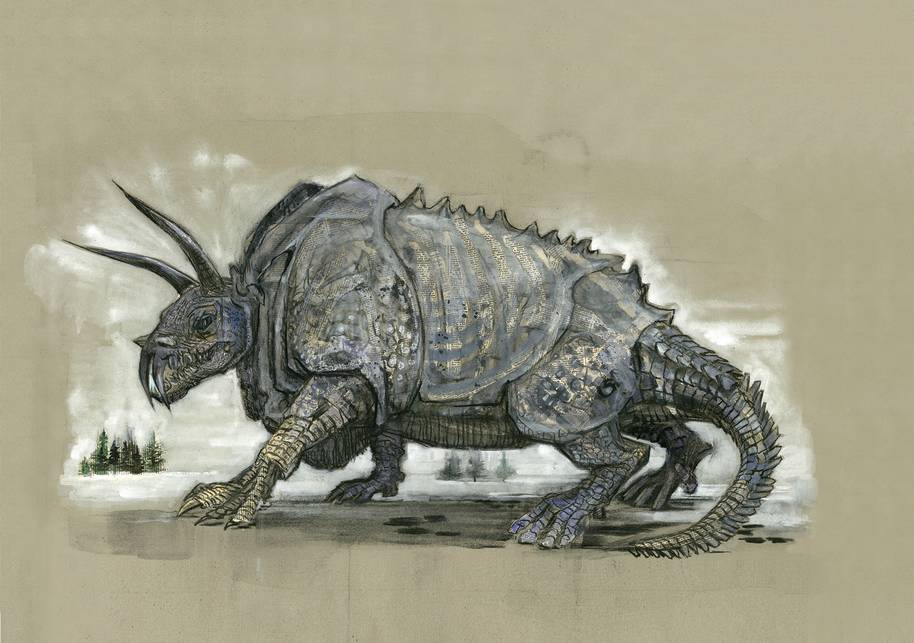
When she was illustrating Hogwarts Library book Fantastic Beasts and Where to Find Them, Olivia was keen to work from existing accounts of mythological creatures, or even better, real zoological records. For the Graphorn, she needed inspiration for a beast with very long, sharp horns, four-thumbed feet and an extremely aggressive nature. She based it on the skeleton of a prehistoric quadruped from the Natural History Museum in London… but added some fangs.
For the huge grey plates of gnarly hide that protect its body, there are words discernible under the subtly purple colouration: ‘this one I’ve approached with a technique I like to use a lot, which is collage, which I use often of old encyclopaedia pages. And I’ll paint over them, so you’re not really seeing the text particularly, but the charcoal.’
Deciding on a Sorting Hat
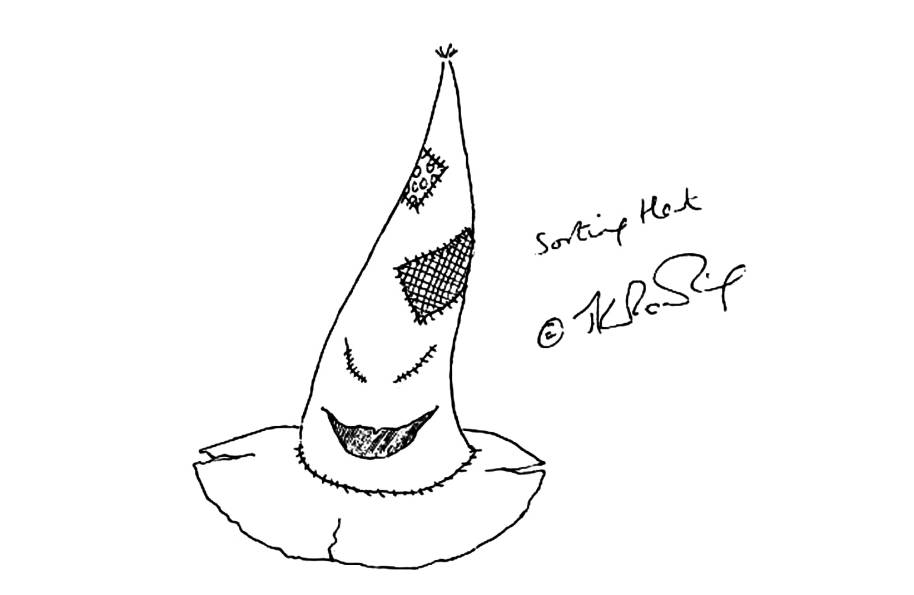
The audiobook also contains discussion of several precious documents and illustrations from J.K. Rowling’s personal archive, including an early version of the Sorting Hat song. Her brainstorming notes, complete with doodles and scribbles in the margin, help us to understand how she finally made a decision on magical school administration.
Alongside the document with the song’s lyrics there is also discussion with Joanna Norledge (Lead Curator, Contemporary Literary and Creative Archives) of another sketch of the Sorting Hat itself, very close to how it has been represented in the books and films. As J.K. Rowling described the process of deciding on the Sorting Hat on this very site: ‘Finally, I wrote a list of the ways in which people can be chosen: eeny meeny miny mo, short straws, chosen by team captains, names out of a hat – names out of a talking hat – putting on a hat – the Sorting Hat.’
This really just scratches the surface of the wealth of material in the nearly twelve hours of the Harry Potter: A History of Magic audiobook. If you have any interest in a scroll that when unfurled is as tall as a giraffe, a ‘real’ mermaid which might be the upper body of a monkey and lower half of a fish put together, or bones from China that divine the future, never mind the historical forebears of the magic at the heart of the Harry Potter stories – this is for you!
The audiobook is out now and available to buy in in the UK here and the US here.


